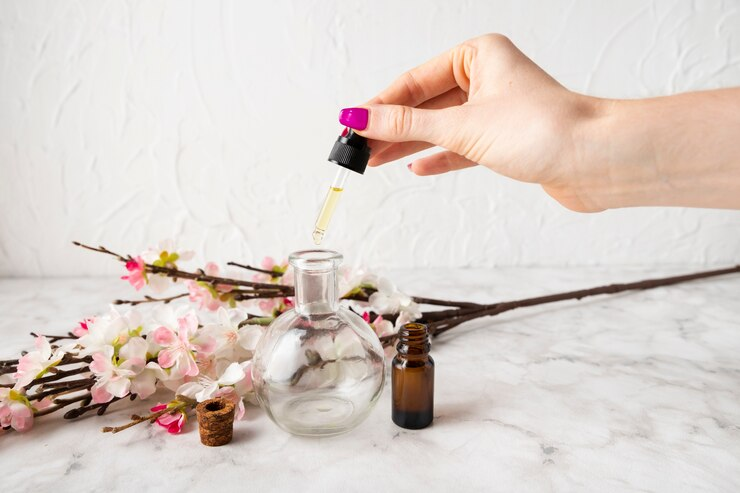Written by Malika Kaushik
Edited by CHIQIO
Keywords: olfactory imagery, smell and memory, emotional expression, sensory experience, creative writing
Meta description: Discover the art of olfactory imagery and learn how to evoke powerful memories and emotions through scent. Enhance your writing and creative projects with vivid sensory descriptions.
Among our five fundamental senses, the sense of smell stands out for its profound emotional resonance and its unparalleled ability to trigger memories. Fragrances can transport us to specific moments and places, evoking deeply buried emotions. This remarkable power of scent also plays a crucial role in literature and art. In this blog, we will explore the art of olfactory imagery and guide you in creating your own!
The Connection Between Smell and Memory
The link between smell and memory is scientifically profound. The olfactory bulb, responsible for processing smells, is directly connected to the limbic system, which includes the amygdala and hippocampus — regions of the brain associated with emotion and memory. This direct pathway explains why certain smells can evoke powerful memories and emotions, often more vividly than visual or auditory cues.
The Role of Olfactory Imagery in Literature and Art
Olfactory imagery has been a potent tool in literature and art for centuries. Authors and artists use it to add depth and evoke emotions in their works. Marcel Proust’s “In Search of Lost Time” is a quintessential example, where the taste and smell of a madeleine dipped in tea trigger a flood of childhood memories. Artists, too, hint at scents in their paintings, inviting viewers to imagine the aroma of a depicted scene, thus enriching their experience.
Techniques for Creating Vivid Olfactory Imagery
Crafting olfactory imagery involves more than merely naming a scent- it requires invoking the “sensory experience” accompanying it. Here are some techniques to help you create vivid aromas in your writing:
Specificity
Using precise descriptions can make a scent alive in the reader’s mind. Instead of saying “flower,” describe, for instance, the sweet, powdery fragrance of a blooming rose or the rich, intoxicating scent of night-blooming jasmine. Specific details help paint a more vivid picture.
Contextual Clues
Pairing scents with relatable experiences or environments can enhance their impact. Describing the smell of rain on hot pavement might evoke memories of summer thunderstorms, while the scent of freshly cut grass can bring to mind lazy, sunlit afternoons!
Sensory Synergy
Combine olfactory imagery with other senses to create a fuller experience. The smell of cinnamon can be paired with the warmth of a kitchen and the sight of steam rising from a freshly baked pie. This multisensory approach can make the description more immersive.
Emotional Resonance
Tap into the emotional connections people have with certain scents. The smell of a particular perfume might evoke longing, nostalgia or a sense of comfort and safety. Using scents to trigger emotions can make your descriptions more powerful and relatable.
Practical Exercises for Enhancing Olfactory Imagination
To improve your ability to create olfactory imagery, try these practical exercises:
Memory Mapping
Write about a memory associated with a specific scent. Describe the scent in detail and explore the emotions and memories it evokes. This exercise can help you understand the deep connection between smell and memory.
Scent Journaling
Keep a journal of the different scents you encounter daily. Note down descriptions, contexts and any emotions they evoke. This practice can sharpen your olfactory perception and improve your descriptive abilities.
Imaginary Scents
Create a scene in your mind and describe the scents that would be present. Use all your senses to make the scene as vivid as possible. This exercise can help you develop a richer sensory imagination.
Conclusion
A range of aromatic spices in various colours and textures (Image Credits: Vecteezy)
The art of olfactory imagery is a powerful tool in literature, art and emotional expression. By tapping into the profound connection between smell, memory and emotion, we can create richer, more immersive experiences. Whether you’re a writer, an artist or someone who appreciates the finer nuances of sensory perception, honing your ability to craft aromas in your mind’s eye can deepen your understanding and appreciation of the world.
In a world increasingly dominated by visual and auditory stimuli, taking the time to explore the evocative power of scent can enrich our lives in unexpected ways. So, next time you catch a familiar whiff, savour the memories and emotions it brings and consider how you might capture that essence in your creative endeavours.



 No products in the cart.
No products in the cart.